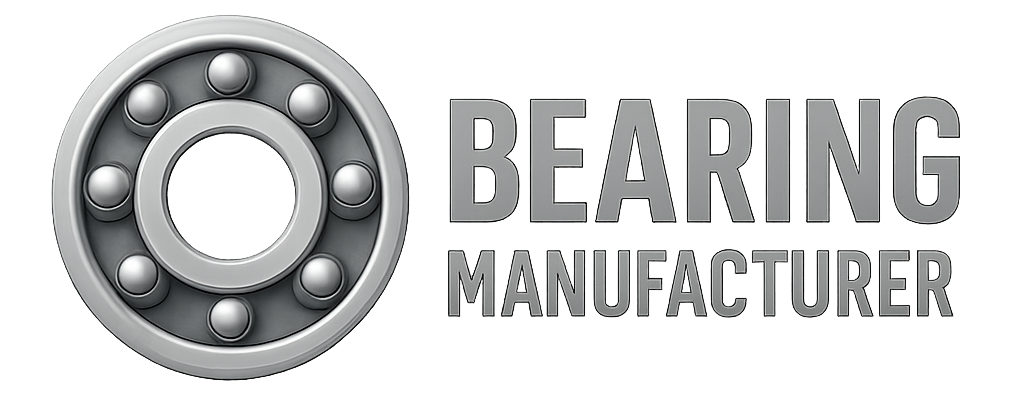Bearing wear is a major factor that affects the performance and lifespan of rotating machinery. Unaddressed wear not only lowers machine efficiency but can also cause unexpected downtime due to premature bearing failure. This article explores the primary types of wear encountered in rolling bearings, explains their root causes, and offers guidance on selecting the appropriate grease to mitigate wear and extend bearing life.
Types of Rolling Bearing Wear
Bearings can exhibit several distinct wear patterns during operation. Recognizing these wear types helps in effective maintenance planning and failure prevention.
1. Abrasive Wear
Definition: Abrasive wear occurs when hard particles or rough surfaces slide against softer bearing components, resulting in material removal.
Common Causes:
-
Ingress of contaminants such as dirt, sand, or metal debris into the lubricant.
-
Inadequate lubrication or lubricant degradation leading to poor formation of protective films.
Affected Areas:
-
Raceways, rolling element end faces, and ribs in both ball bearings and roller bearings.
-
Often appears as polished or scored surfaces, increasing internal clearance and reducing bearing life.
Prevention:
-
Use high-quality filtration to keep lubricants clean.
-
Apply surface coatings to increase hardness and wear resistance.
-
Employ condition monitoring systems (e.g., Wear Debris Check Systems) to detect early signs of abrasive particles in lubricant.
-
Material pairing strategies, such as combining hard and soft materials, help trap abrasive particles in the softer surface, minimizing damage.
2. Adhesive Wear (Smearing)
Definition: Adhesive wear results from material transfer between contacting surfaces due to sliding under load, causing surface damage like scuffing or scoring.
Causes:
-
High contact pressures and relative sliding motions between rolling elements and raceways.
-
Insufficient surface hardness or inadequate lubrication.
Mitigation Strategies:
-
Use harder materials or apply surface treatments such as chromium or nickel plating.
-
Implement design changes, such as selecting different bearing types or cage designs to reduce sliding.
-
Apply protective coatings like black oxide to improve surface durability.
3. Fretting Wear / Corrosion
Definition: Fretting wear occurs due to micro-movements between closely fitted bearing parts, combined with oxidation, resulting in corrosion and surface degradation.
Causes:
-
Insufficient lubrication leading to metal-to-metal contact.
-
Small relative oscillatory movements caused by shaft deflection, housing deformation, or improper fits.
-
Lack of axial preload causing relative motion between components.
Preventive Measures:
-
Adhere strictly to manufacturer mounting recommendations for fit and preload.
-
Increase rigidity of shaft and housing to minimize micro-movements.
-
Use tight bearing seats and apply protective coatings on bearing seats.
4. False Brinelling
Definition: False brinelling is characterized by wear-like indentations on raceways caused by small oscillatory movements of rolling elements in stationary bearings without a proper lubricant film.
Typical Scenario:
-
Occurs during transport or storage, especially with vibration or minor movement but no rotation.
Indicators:
-
Wear marks with corrosion discoloration (brownish), often with clear edges differentiating from surrounding surfaces.
Prevention:
-
Minimize axial movement during transport (e.g., secure machinery).
-
Use bearings with appropriate radial clearance.
-
Select lubricants containing anti-wear additives.
-
Differentiate false brinelling from true brinelling by examining the surface texture—false brinelling removes the surface pattern, while true brinelling preserves it.
Selecting the Right Grease for Rolling Bearings
Effective lubrication is critical to reduce bearing wear and extend service life. The grease must be selected based on bearing type, operating conditions, and environmental factors.
Grease Components
-
Base Oil: Determines lubricant film formation; can be mineral or synthetic (e.g., polyalphaolefin, polyglycol, ester), each with unique temperature and performance characteristics.
-
Thickeners: Provide consistency and grease structure; include metal soaps (calcium, lithium), metal complex soaps, and advanced organic or polymer types (e.g., polyurea).
-
Additives: Enhance grease performance; include oxidation inhibitors, detergents, anti-wear agents, corrosion inhibitors, and extreme pressure additives.
-
NLGI Grade: Measures grease hardness/consistency (grade 000 to 6); rolling bearings typically use grades 1 to 3.
Factors Influencing Grease Choice
| Factor | Considerations & Recommendations |
|---|---|
| Bearing Type | Ball bearings (point contact) require lower viscosity (ISO VG 68-100). Roller bearings (line contact) need higher viscosity greases (ISO VG 150-460). |
| Speed | High-speed bearings need greases with higher speed capabilities to reduce friction and heat. |
| Temperature | Grease must operate reliably within bearing temperature ranges; consider dropping point and viscosity stability. |
| Load | Heavy loads require greases with higher viscosity base oils and anti-wear additives. |
| Moisture and Water Exposure | Prefer greases with water-resistant thickeners (e.g., barium, calcium complex) in humid or wet environments. |
| Oscillations, Shocks, Vibrations | Use mechanically stable greases that maintain consistency under vibration. |
| Seal Compatibility | Grease consistency affects sealing; harder greases improve contaminant exclusion but may increase leakage risk if too soft. |
| Mounting Position | Vertical or inclined bearings may need more viscous grease to prevent leakage. |
| Compatibility | Use compatible greases when multiple lubricants are present to avoid adverse chemical reactions. |
Conclusion
Understanding the mechanisms and types of bearing wear is essential for effective maintenance and failure prevention. Selecting the right grease based on detailed operating conditions plays a pivotal role in minimizing wear and enhancing bearing reliability. By applying these insights, engineers and procurement professionals can optimize bearing life and machine performance.
Bearing Maker remains committed to supplying high-quality bearings and expert support to meet the rigorous demands of modern machinery.
